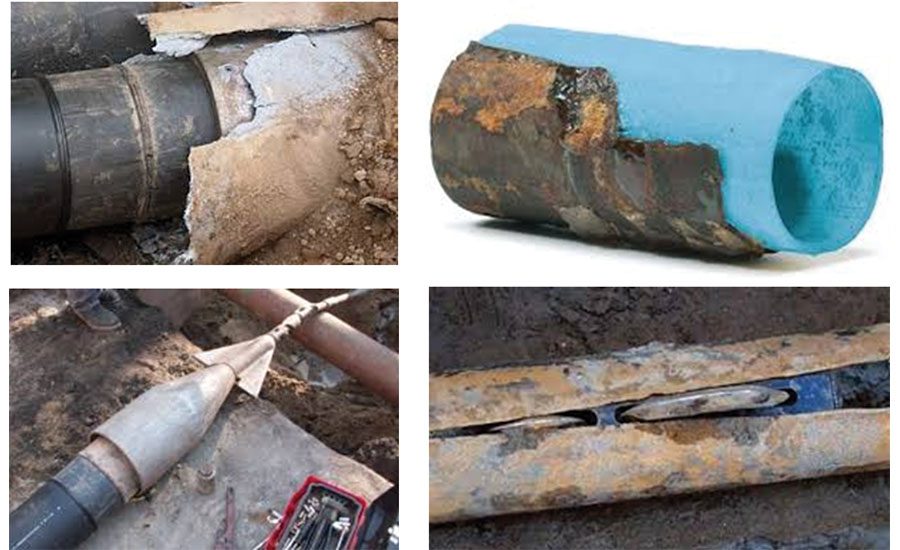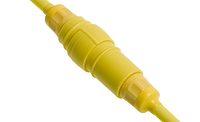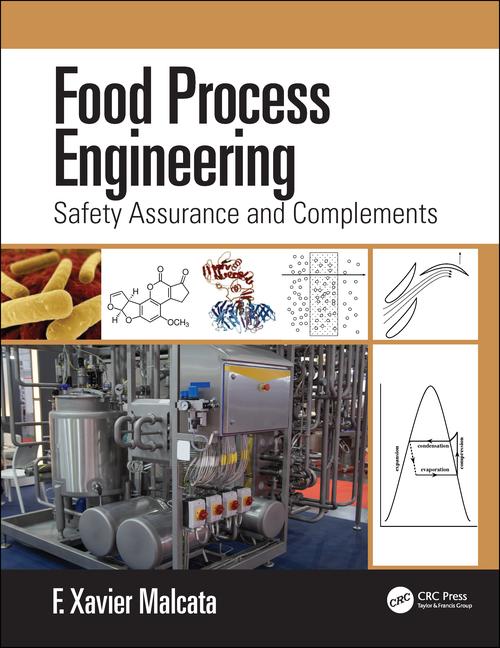Food Safety
How to upgrade your plant to meet food safety standards
If your plant is more than 30 years old, chances are it needs some work if it’s to meet current regulations and pass muster with food safety and customer audits

Dock doors should be tightly sealed to prevent the ingress of critters and improper airflow balance. In this facility, dock door controls and walls are protected from forklifts via steel bollards.
Photo courtesy of Ross Van Pelt, RVP Photography

Solving underground piping problems takes many forms: (starting top left, clockwise): bursting a concrete pipe, installing a pipe lining, splitting an iron pipe and using a plastic pipe cutter.
Photo courtesy of ESI Group USA

Evaporators are often forgotten, but still need to have filters changed, drainage pans cleaned and drain tubes checked for clogs to decrease the likelihood of bacterial buildup.
Photo courtesy of Ross Van Pelt, RVP Photography



Just like an older home, an aging food plant can have its share of problems. If your roof leaks, or there’s a hole in the wall in which cold air and critters could come through—or your front door loses all its weather stripping—you’d be on it in no time. These situations are even more problematic for an older food and beverage facility, especially where food safety is concerned.
If your plant engineer doesn’t routinely check for facility problems, plant conditions have a way of deteriorating quickly. And in a food plant, many of these problems aid bacterial growth if not expediently fixed. Knowing which things to check is a good place to start, such as water stains on the ceiling or walls; standing water; excessive dirt or dust on or around grills; unsealed wall or ceiling penetrations; improper door closure; improper area pressurization; dirt, dust or residual product on equipment, support frames or cabinets; personnel and materials flow paths; personnel gowning and hygiene practices; and your cleaning procedures—to name a few.
What can go wrong?
Architectural and engineering professionals can tell a few stories about older plants and the remediation needed to make these facilities more food safe.
“Our team had to solve a problem that segregated personnel from the process because of Salmonella cross-contamination,” explains Ib Elandaloussi, process engineer for Burns & McDonnell’s food & consumer products.
The manufacturer, located in the Midwest, produces extruded food products and had Salmonella throughout the plant. Elandaloussi’s engineering team planned a design to segregate personnel, control flow in and out of high-risk areas and physically separate the extruder area and dryer area.
“It was a unique project, because the facility was poorly designed for food safety, and we had to look at several options and evaluate them for logistics, reliability, efficiency and food safety,” adds Elandaloussi.
Peanut Corporation of America had a roof leak, which caused widespread Salmonella contamination in peanut paste and peanut butter products. Moisture is an insidious problem, says Eric Wigger, Food Plant Engineering project manager.
“We worked with a client in a hot, humid climate,” he says. “Moisture was coming through the ceiling of the facility. It was a condensation issue and required us getting on top of the ceiling, cleaning and sealing all of the joints and installing metal panels. That stopped the condensation.”
Wigger knows of a couple of situations where owners had extreme roof problems, some with leaks for many years or improper ventilation in the ceiling cavity. One solution was to build another roof over top of the existing roof and then tear out the old roof, which solved the problem.
Noah Schneider, STSC, project director for CSM Group, food & beverage/industrial manufacturing, recalls a food manufacturer producing baked goods in the Southeast that was experiencing bacterial contamination in its RTE areas of production. The facility was over 50 years old and had experienced extensive growth in the past five years. The quantity of production lines had nearly doubled, and new equipment was interspersed between existing equipment.
Upon investigation into potential sources for contamination, it was determined that the air handling equipment servicing the RTE area had not been evaluated or upgraded with the newly added loads. In addition to the inabilities of the equipment itself, the distribution system was unchanged. Inspections of the equipment revealed heavily contaminated growth areas within the ductwork and air handlers—some of which were not even completely functional.
The solution was to clean and service all the air handling units and replace the interior ductwork distribution system with a fabric duct. The fabric duct allows for planned maintenance and cleaning, and provides proper distribution of the air to the required areas. All the air handling equipment was able to be returned to originally designed specifications, and new drip pans and filters were installed. The root cause of the contamination was determined to be condensation pans clogged with debris that passed through inadequate filters. Proper maintenance and analysis of the required air distribution needs of the new production operations would have prevented the contamination and avoided costly product holds and rework.
Food safety planning and surveys
Under FDA’s FSMA, a processor’s food safety plans are expected proactively to identify food safety risks and hazards; implement preventive controls; monitor, validate and verify that the implementation is functioning as designed; and provide the necessary training and documentation to sustain the plan on a continuous basis. Routine inspection, maintenance and mitigation procedures should be in place to validate and verify that the facility’s program for the prevention of potential food safety issues is adequate and working, says Mike Follmer, RA, vice president/senior project architect at Hixson Architecture & Engineering.
“There is an expectation that every food safety risk is identified, with a plan in place for mitigation of each risk,” he says.
Even if you’re not planning a facility upgrade, facility surveys should be a normal occurrence.
“The survey should be done on a weekly basis, and daily if necessary, which would involve bacterial swabs to detect any growth,” says Ronald Walden, senior project manager for Alston Construction’s food & beverage group.
The plant manager, QC manager and shift supervisor should all be present. The survey should cover all areas—not just the hot spots. Once areas have been cleaned, another set of swabs should be taken to ensure they are free of bacteria.
“When possible, I think these surveys are best conducted in house, because it allows you to control the solutions and discussions that take place about your facility and its cleanliness,” says Mike Keough, Stellar director of business development. “These surveys should be risk based. Consider what the greatest risk of your process is and make that the priority. For example, you’re going to do things differently if your process is raw meat and poultry vs. a fried snack item.”
Surveys should be internal and multi-departmental, says Mark Redmond, PE, president, Food Plant Engineering. QC, operations and maintenance departments should be involved in surveying the entire plant thoroughly, from floor to ceiling, because different sets of eyes see different issues.
“Before you begin, identify your survey criteria based on your process and facility,” advises Redmond.
Use broad strokes at first to survey the plant, looking down and up, because overhead problems are often overlooked. Next, identify and evaluate areas that need to be looked into further, rating the potential for risk. If there’s a high risk potential in a particular space, swab the area.
When you need a facility upgrade
When a facility upgrade is necessary to fix severe or recurring issues, it’s time to enlist outside help to plan the project. But remember, if a project is not funded to go beyond the scope of the planned project, preliminary, detailed audits might not be considered part of it, says James White, senior process engineer at CRB.
“As consulting engineers in a regulated industry, it is our responsibility to do our due diligence and point out issues or deficiencies in the facility to the owner or owner’s representative,” says White.
The survey or audit should be a multidisciplined approach conducted by a certified survey/audit company and should include members of the operations and maintenance groups, as well as those individuals familiar with regulations, including FDA and cGMP requirements, adds White.
“Often, we are tasked with reviewing a known trouble spot or helping to identify the root cause of an issue,” adds White.
Sometimes, this can lead to a simple solution, but could require expanding the scope of the survey to other areas of the facility—for example, roof, mechanical or interstitial space, or underground plumbing.
One other issue looms in plant upgrades—codes. You may find that other things not associated with the actual upgrade, like plumbing or electricity, need to be brought up to code to meet local requirements.
“A code requirement survey is important, as many legacy buildings have not been updated in a long time, and the utilities may be outdated as well,” says Pablo Coronel, PhD, CRB director food processing.
Electrical, mechanical, air handling and civil surveys must be done, and a comprehensive report should take all possible risk factors into account.
As exemplified earlier via the bakery example, a food facility is often built around specific processes and products, but over the years, the facility grows and adapts to changes in production methods, requirements and technology, as wells as new products, says Coronel. Often, new lines are crammed into the space, and modifications are made as needed. Any facility upgrades must be done around the existing and possible future processes that will be carried out in the facility.
Roof problems: Fix or replace?
How serious is a roof leak? Much of what FDA found at Peanut Corporation of America (PCA) was enough to warrant major upgrades to the roof and HVAC systems. Besides an ineffective peanut roasting system, which failed to kill Salmonella, FDA discovered mold growth on ceilings and walls, gaps in A/C intakes on the roof where contaminated water leaked in over production and packaging areas, and other exposed openings to the outdoors.
“The easiest way to spot where a leak might be is to look for staining on surfaces underneath the roof,” says Ed Wright, project executive for The Austin Company.
This would include the structure and ceilings below. If a leak is identified, Wright recommends a professional roofing company that is proficient in repairing and/or replacing the specific type of roof that is currently on the structure.
“Roof leaks can be very tricky,” says The Austin Company’s Jeff Dearduff, corporate director, baking and snack. “You may have the spot identified where the moisture is dripping through, but the slope, roof construction type, insulation condition and number of penetrations can cause you to chase the source of a single leak to areas far away from the identified drip point.”
A thorough understanding of the roof design above the visible ceiling is a must, so that tracking can be fast, effective and sure, adds Dearduff. Roof condition issues must be inspected from the surface with visuals of what is apparent—and further core samples of the roof buildup systems—to understand the conditions of the layers below.
Roof inspections should be conducted after a recent rainfall or enhanced with added water to view how the roof drains and to observe any areas of poor drainage/pooling, says Carl Enzenauer, process engineer for Wenck’s facilities and process engineering. Inspections after rainfalls should extend to rooftop/outdoor HVAC units to look for water penetration into the units’ housings. Ceiling inspections should be up close, looking for actual leaks, corrosion or discoloration. Cost-effective fixes (short of entire roof substrate replacement) range from roof patching by a qualified contractor, installation of product shields or catch pans with drains routed away from open product.
Improperly sloped floors
Unfortunately, our fast-paced changes in new cravings at the supermarket can make it really difficult for processors to keep up, and that’s not necessarily good.
“Product lines are changed out overnight, and time has not been spent to address floor slopes and repairs,” says Tim Williams, director of project management, Dean Snyder Construction.
To help find problems ahead of time, making a 3D model of a room with its equipment can save a lot of headaches after the fact, adds Williams.
CRB’s White shares an old construction joke. Question: How do you locate the high spot in the floor? Answer: Look for the floor drain. Floor drains are notorious for not being the low point of the floor. Obvious signs are standing water or areas that have to be squeegeed to get them dry.
An incorrect slope can be addressed using a commercially available floor coating and a buildup to the floor to achieve the proper sloping, says White. Additionally, spill containment or berms can be installed using floor coatings to keep wet areas contained and away from dry areas.
Several modern floor systems exist that can be applied on top of existing floors or require very little rework, adds CRB’s Coronel. Systems using polymers (polyurethane, epoxy, etc.) can be applied and graded properly. The key is to find a qualified contractor to do it right the first time. Keep in mind that floors can only be done after any underground utilities work has been finalized.
Adding drains to improperly sloped floors can be problematic, as puddles may still exist, says Dean Weber, manager for Wenck’s facilities & process engineering group. High-strength urethane grout can be applied over the concrete floor to fill in low spots. Polymer grout can also be added to slope the substrate with a +1/4-inch overlayment of urethane concrete mortar topping, which can provide the necessary 1 to 2 percent slope to existing drains. The most expensive option in terms of cost and scheduling is the complete replacement of the floor and drain system.
Cracks, drains and under the floor: Repair or replace?
It’s common for flooring to crack around drains due to thermal expansion, says Stellar’s Follmer. So, it’s important to maintain these to avoid the accumulation of dangerous levels of Listeria and erosion under the slab. In older buildings, Follmer also recommends running a vision system/CCTV down a certain percentage of drains to check for any material breakdowns, rotting or buildup. There are many solutions to repairing in-floor or underground piping, and often, the solution will be very specific to a particular situation.
Drain systems are usually one of the most deteriorated portions of a manufacturing facility, partially due to their use and abuse over the life of the facility, says CSM Group’s Schneider. Failures occur from incorrect chemical use, incorrect drain system materials, inadequate pipe sloping, clogs and clog removal practices that can destroy drain components, such as P-traps and Y-connections. Corrective solutions that are least destructive can be pipe lining and selective excavation and the replacement of failed components. Detailed scoping, planning and video analysis of existing conditions are good methods to develop the baseline information necessary to make informed decisions on repairs.
After locating by video inspection where a blockage is, the pipe should be cleaned via hydro jetting or mechanical means, says Mark Livesay, ESI Group USA vice president automation. There are different technologies available to repair the piping without tearing up the floor. One of them is lining the pipe where an epoxy liner is pulled, inverted, installed and cured in place. Another system is static or dynamic pipe bursting, where the existing pipe is cut or burst, and a new, same diameter or larger pipe is pulled into place, replacing the damaged piping without tearing up the entire floor, adds Livesay.
Floor drains are one of the most difficult subjects when it comes to plant upgrades—not only from a food safety point of view, but also from environmental and code perspectives, says CRB’s Coronel. “Underground” utilities packages are probably the most complex and expensive part of any renovation project. Unfortunately, it becomes even worse if problems are found after tearing up sections of the floor.
In very few cases, the issues are easy to solve (e.g., clogged pipes), but more often than not, a complete rebuild of the floor drain system is needed for reliability and safety, adds Coronel. In a perfect world, the current occupant of the space has access to the original drain plans, and no modifications have been performed over the years. Unfortunately, in many cases, even finding the location of the pipes and the drain “trees” is a major task.
Walls—be gentle with them
What if Listeria monocytogenes (Lm) are found on a wall? Considering that walls and partitions need to be stainless-steel (SS) wall panels or a cement wall that is washable (no voids), and if the right cleaning procedures are followed, there should be no Lm present.
“If Lm is found on a wall, then it may be an indicator of a more insidious problem than if [it is] found on the floor or floor drain, because it likely indicates an issue with airflow and air quality, which could mean Lm may be throughout the facility, rather than focused in one area,” says Burns & McDonnell’s Elandaloussi.
In such a scenario, the root cause must be determined, and thorough testing of the entire facility needs to be conducted.
“Think about why [Lm] occurred in the first place. Why is it there?” says Elandaloussi. “Address the issue—review sanitation logs, procedures, sanitation, validation.”
Is the Lm just on the wall or in the wall?
“If Lm is found in a wall, it may be a symptom of a much greater problem, as the wall may now be a repository for bacteria and needs to be remediated,” says CRB’s Coronel.
In many cases, interior walls may have water leaks in the footings and wherever penetrations have been made into the walls. Walls can be either resealed, or large sections will need to be replaced, Coronel advises.
Another problem in older facilities is bacterial growth, often due to incompatible materials being used or facilities being repurposed for a new application with no consideration to the existing construction materials, says CSM Group’s Schneider. Rooms that have been converted into production areas could have used building materials susceptible to moisture intrusion or have voids between improperly sealed wall-to-ceiling and wall-to-floor joints and voids behind the wall construction. These conditions foster bacterial growth for weeks or years—until a catastrophic event occurs.
“Often, a minor appearance of an issue on an exterior surface can be the tip of the iceberg of greater concerns hidden from view,” says Schneider
Remediation for these situations can include the complete removal of the suspect construction materials and starting from bare construction with correct construction materials.
However, the biggest wall problems are damages caused by forklifts and people, says Stellar’s Keough. When walls get punctured, the inside of them is exposed, making it harder to clean them properly. These holes become susceptible to harboring bacteria—whether the walls are insulated metal panels (IMPs) or porous concrete block.
The biggest problem with walls and partitions, especially IMPs, is they don’t seal well to a curb surface or a floor surface, says The Austin Company’s Dearduff. Channels and caulking is the typical fix but never serves as a permanent barrier from moisture penetration. When IMP walls with Styrofoam or other insulation get wet, they can wick that moisture into the walls, which leads to breeding grounds for bacteria, out of sight and out of mind.
Conclusion: What’s the business plan?
So far, we’ve only scratched the surface on the problems and potential repairs or upgrades that may be needed to bring an older food or beverage plant up to meet the rigors of today’s food safety regulations. Whether it’s less expensive to apply Band-Aids for now or upgrade major sections of a plant will depend wholly on the application and projected growth of a company and/or facility.
A processor’s business plan and future forecast will ultimately decide which is best: patching problems, renovating or moving to a new site.
For more information:
Alston Construction, www.alstonconstruction.com
Burns & McDonnell, Website for Food Safety & Food Defense
CRB, www.crbusa.com
CSM Group, www.csmgroup.com
Dean Snyder Construction, www.deansnyderconst.com
ESI Group USA, www.esigroupusa.com
Food Plant Engineering, www.foodplantengineering.com
Hixson Architecture & Engineering, www.hixson-inc.com
Stellar, www.stellar.net
The Austin Company, www.theaustin.com
Vilter, www.emerson.com/vilter
Wenck, www.wenck.com
Looking for a reprint of this article?
From high-res PDFs to custom plaques, order your copy today!












